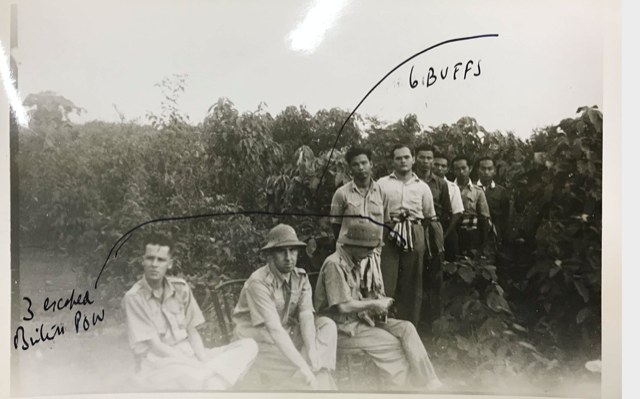In mid-19th century America, the concept of slavery evoked passion on both sides of the issue: pro and con. To sustain and protect escaping slaves, a system of safe houses and hiding places was developed that became known as the Underground Railroad. It was designed to get slaves out of the South to States were slavery was illegal and even all the way to Canada.
Ironically, as Allied POWs were used as slave labor to build the Thai-Burma Railway, a similar (somewhat more informal) system was developed to aid those who sought to escape from captivity. A loosely organized group of merchants, Thai government officials (particularly Police) and members of the Seri Thai functioned together to sustain and protect escaping POWs.
There is undoubtedly a larger story here, but it can be introduced via the amazing escape of three British POWs in 1945.
Chumphon Province [1] is about halfway down the Isthmus of Thailand, between Bangkok and Phuket. This was the beginning of the Kra Isthmus Railway. Many TBR POWs and thousands of romusha were sent there to build it to aid in the evacuation of IJA troops from Burma. In Jan 1945, with the aid of some Thais, British Private Ronald Whatmore walked out of the camp there where he was in a workcrew building an airstrip. He was hidden in town until transport could be arranged. This took until mid-March when he finally departed by boat heading north by river. After another long delay, he boarded a train for BanPong disguised as a train crewman.
His story skips forward to mid-May 45 when he is united with the two other escapees near Tha Muang about 12 Km SE of Kanchanaburi. The trio departed by boat down the Mea Klong River headed to Bangkok. From there they were spirited away in a Thai Police vehicle and a few hours later they were airborne in a Thai plane headed west. Eventually, they boarded a British plane and were taken to India.
The other two POWs, British Ptes Richard Brown and Jack Smith began their escape at the NongPlaDuk POW camp on 4 DEC 1944. Using the panic induced by Allied air raids on the junction railhead, they simply walked out of the camp and started walking north with no true destination in mind. Over the course of the next few months, they took full advantage of the hospitality of Thai families to shelter and feed them. By 8 DEC, they had progressed some 30 Kms to Supanburi Province NW of NongPlaDuk. Their escape stalled there until mid-May. Aided by Thai Police Officers, they made their way to Tha Muang where they first met escapee Whatmore. From there the trio traveled together as described above.
Obviously, an incredible amount of detail is missing from these stories. We must assume that the timeline is reasonably accurate. How these three men were able to survive for months in hiding, protected, sheltered and fed by Thai families is truly miraculous. It speaks to at least the informal existence of an Underground Railroad of sorts. That they were able to meet up is quite incredible. That they made their way to India is doubly miraculous.
[1] Chumphon had also been one of the initial entry points of the Japanese invasion in Dec 1941.

